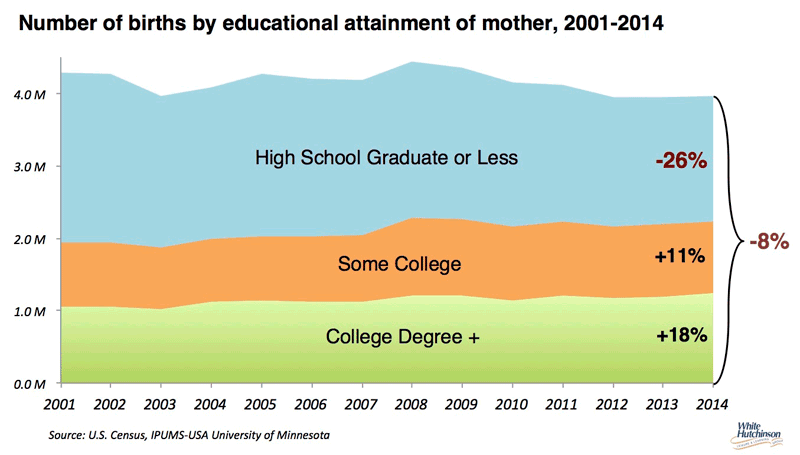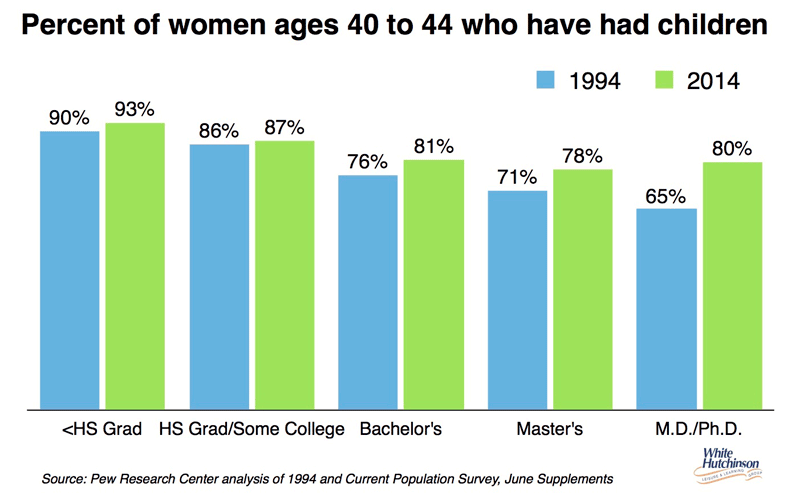
Vol. XVI, No. 9, November 2016
- Editor's Corner
- Meet our CEO at upcoming conventions
- The shrinking children's market; the good news
- What draws restaurant visits?
- A few of our current projects
- Leisure time is a zero-sum game; how much of it will you get?
- Gamerooms are stuck in a time warp
- Preliminary market feasibility analysis
- The Great Pumpkin brings egg-citement to agritainment
- Missing the investment sweet spot can be costly
The shrinking children's market; the good news
In last month's issue, our article The shrinking children's market, discussed the baby bust and the continuing depressed birth rate as well as KGOY, kids getting older younger. Both are shrinking the potential market size for children-oriented entertainment and edutainment projects.
However, there was some good news when we dug deeper into the data. Although the number of births was down by 8% between 2001 and 2014, a larger proportion of births were to college-educated mothers. In fact, the number of births by college-educated mothers has increased by 16% from 3.0 million in 2001 to 3.47 million in 2014.

When we look at women at the end of their childbearing years over the past 20 years, we find that although more women of all education levels have had children, the largest increase is among college-educated women.

What this means is that an increasing percent of children belong to higher socioeconomic families with higher incomes and greater discretionary spending.
Children's entertainment and edutainment centers are still feasible, even with the declining birth rate, provided they are located in markets with high concentrations of higher socioeconomic young families. This means that market feasibility now requires a much more detailed and refined analysis of a market area's demographics and socioeconomic lifestyles than in the past to assure a children's center is feasible.
Vol. XVI, No. 9, November 2016
- Editor's Corner
- Meet our CEO at upcoming conventions
- The shrinking children's market; the good news
- What draws restaurant visits?
- A few of our current projects
- Leisure time is a zero-sum game; how much of it will you get?
- Gamerooms are stuck in a time warp
- Preliminary market feasibility analysis
- The Great Pumpkin brings egg-citement to agritainment
- Missing the investment sweet spot can be costly


